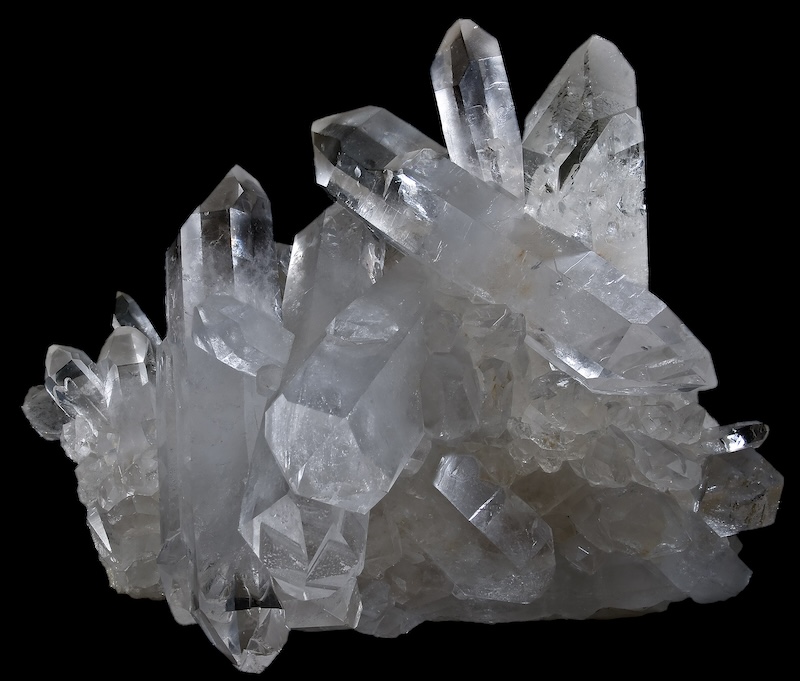
About 1,300 light-years away, cloudy mists are swirling in the high atmosphere of a huge, hot exoplanet called WASP-17 b. But mists don’t resemble those on Earth. Instead, they’re composed of extremely tiny grains of quartz, a form of silica. Astronomers have detected silica in exoplanet atmospheres before. But this is the first time they’ve found particles of what appears to be pure quartz. The Webb Space Telescope made the discovery, which NASA announced on October 16, 2023.
The large international team of researchers submitted its peer reviewed paper to The Astrophysical Journal Letters for publication on October 20.
The 2024 lunar calendars are here! Best Christmas gifts in the universe! Check ’em out here
Tiny quartz crystals on a hot, faraway world
The planet, WASP-17 b, is a hot Jupiter 1,300 light-years from Earth in the constellation Scorpius the Scorpion. Hot Jupiters are gas giants like Jupiter but can be larger and orbit very close to their stars. As a result, they are sizzling hot worlds, inhospitable for life. WASP-17 b is so close to its star that it completes an orbit in only 3.7 days! The planet is tidally locked to its star, so one side is permanently in daylight, while the other side is always night. Temperatures range from about 1,350 degrees F (732 degrees C) on the nightside to nearly 3,150 degrees F (1,732 degrees C) on the daylight side.
The Hubble Space Telescope had studied WASP-17 b previously, and the results suggested there were aerosols in the planet’s atmosphere. Aerosols are clouds generated via condensation or hazes via photochemistry. What scientists didn’t expect, however, was that the particles in the aerosols would be quartz.
Apart from the quartz, WASP-17 b’s atmosphere is composed of hydrogen, helium, small amounts of water vapor and hints of carbon dioxide and other molecules. The star, WASP-17 (also called Diwö), is an F-type star. It is slightly larger, more massive, hotter and whiter than our sun.
Webb observes WASP-17 b
That’s where Webb comes in. The space telescope used its Mid-Infrared Instrument (MIRI) to determine the composition of the particles. Lead author David Grant at the University of Bristol in the U.K. stated:
We were thrilled! We knew from Hubble observations that there must be aerosols – tiny particles making up clouds or haze – in WASP-17 b’s atmosphere, but we didn’t expect them to be made of quartz.
If you could visit the exoplanet, the particles would be like a very fine mist or “snow.” The quartz grains are so small that 10,000 of them could fit side-by-side on a human hair. Each one is only 10 nanometers across, one-millionth of one centimeter. And it wouldn’t be a pleasant experience; the particles are moving at thousands of miles per hour in the turbulent atmosphere.
Silicate crystals unlike any seen before
Silicates in general are common both in our solar system and throughout the Milky Way galaxy. In fact, astronomers have detected them before in the atmospheres of some exoplanets and brown dwarfs. Webb found silicates in the atmosphere of another giant planet: VHS 1256 b. That planet, 40 light-years away, orbits two stars, not just one. It’s also much farther from its stars, about four times the distance from our sun to Pluto.
But those discoveries have been magnesium-rich silicates like olivine and pyroxene. The silicate particles on WASP-17 b are made of quartz alone. The findings were a surprise to astronomers, as co-author Hannah Wakeford at the University of Bristol noted:
We fully expected to see magnesium silicates. But what we’re seeing instead are likely the building blocks of those, the tiny ‘seed’ particles needed to form the larger silicate grains we detect in cooler exoplanets and brown dwarfs.
The researchers say that the crystals are probably similar in shape to the pointy hexagonal prisms that you see in geodes or can buy in gem shops. Hubble also helped to determine the shapes of the particles. Co-author Nikole Lewis at Cornell University said:
Hubble data actually played a key role in constraining the size of these particles. We know there is silica from Webb’s MIRI data alone, but we needed the visible and near-infrared observations from Hubble for context, to figure out how large the crystals are.

Quartz crystals originate in the clouds
Mineral particles like silica are also in clouds on Earth. They originate from the ground and get swept up into the atmosphere. On WASP-17 b, however, the crystals originate in the atmosphere itself. Grant explained:
WASP-17 b is extremely hot – around 2,700 degrees Fahrenheit (1,500 degrees C) – and the pressure where the quartz crystals form high in the atmosphere is only about one-thousandth of what we experience on Earth’s surface. In these conditions, solid crystals can form directly from gas, without going through a liquid phase first.
It isn’t yet known just how much quartz is present or how extensive the mist-like quartz clouds are. Grant added:
The clouds are likely present along the day/night transition (the terminator), which is the region that our observations probe. The winds could be moving these tiny glassy particles around at thousands of miles per hour.
Webb’s Deep Reconnaissance of Exoplanet Atmospheres using Multi-instrument Spectroscopy (DREAMS) investigations are looking at three planetary targets. A hot Jupiter (WASP-17 b), a warm Neptune and a temperate rocky planet more like Earth. What will they discover next?
Bottom line: Astronomers using NASA’s Webb telescope have discovered clouds of tiny quartz crystals in the atmosphere of a hot Jupiter exoplanet 1,300 light-years away.
Source: JWST-TST DREAMS: Quartz Clouds in the Atmosphere of WASP-17b











